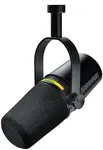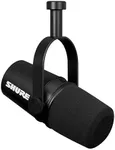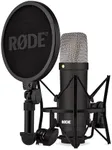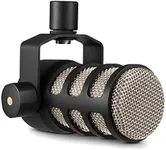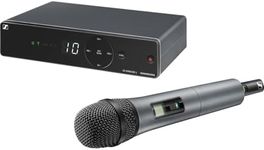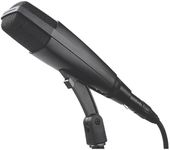Buying Guide for the Best Recording Microphones For Vocals
Choosing the right recording microphone for vocals can make a huge difference in the quality of your recordings. The best microphone for you depends on your voice, the environment where you'll be recording, and the style of music or speech you want to capture. It's important to understand the main features of microphones so you can match them to your needs and get the best possible sound.Microphone Type (Dynamic vs. Condenser)Microphones come in different types, with dynamic and condenser being the most common for vocals. Dynamic microphones are sturdy and handle loud sounds well, making them good for live performances or loud singers. Condenser microphones are more sensitive and capture more detail, which is great for studio recordings and softer voices. If you want to record in a controlled, quiet space and want to capture all the details of your voice, a condenser microphone is usually the best choice. If you need something tough for live use or for recording in less-than-ideal spaces, a dynamic microphone might be better.
Polar PatternThe polar pattern describes how a microphone picks up sound from different directions. The most common pattern for vocals is cardioid, which picks up sound mainly from the front and rejects noise from the sides and back. This is great for solo vocals and for reducing background noise. Other patterns like omnidirectional (picks up sound from all directions) or figure-8 (front and back) are less common for vocals but can be useful in special situations. For most people recording vocals, a cardioid pattern is the safest and most effective choice.
Frequency ResponseFrequency response tells you which parts of the sound spectrum a microphone can capture, from low bass to high treble. A flat frequency response means the microphone captures all frequencies equally, while some microphones are designed to boost certain frequencies, like the presence range that makes vocals sound clearer. If you want a natural sound, look for a flat or slightly boosted frequency response in the vocal range (around 1-5 kHz). If you have a deep or bright voice, you might want a microphone that balances out your natural tone.
SensitivitySensitivity measures how well a microphone picks up quiet sounds. High-sensitivity microphones can capture subtle details, which is great for soft singing or spoken word. However, in noisy environments, a less sensitive microphone might help avoid picking up unwanted background noise. If you record in a quiet studio, higher sensitivity is usually better. If you record in a noisy room, lower sensitivity can help keep your recordings clean.
Connectivity (XLR vs. USB)Microphones connect to your recording equipment using either XLR or USB. XLR microphones are the standard for professional recording and require an audio interface or mixer, offering better sound quality and more control. USB microphones plug directly into your computer and are easier to set up, making them good for beginners or home studios. If you want the best sound and plan to upgrade your setup over time, XLR is the way to go. If you want something simple and quick, USB is a good choice.
Build Quality and AccessoriesThe build quality of a microphone affects how long it will last and how well it handles regular use. Look for microphones with sturdy metal bodies and good construction. Accessories like shock mounts, pop filters, and carrying cases can also make a big difference in your recording experience by reducing unwanted noise and protecting your gear. If you plan to move your microphone around or use it often, prioritize durability and included accessories.
